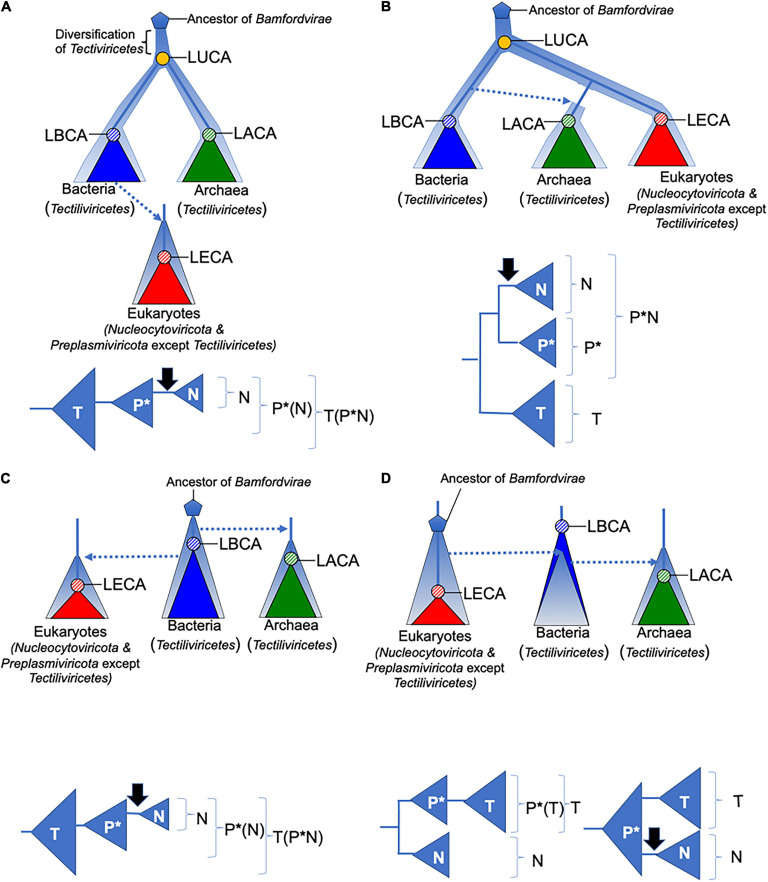FIGURE 2.
Four scenarios for the evolution of Bamfordvirae. The diversification and evolution of viruses are depicted with pale blue thick lines or triangles. Lower panels depict groups that are monophyletic (in brackets) among Tectiliviricetes (T), Preplasmiviricota except Tectiliviricetes (P*), and Nucleocytoviricota (N) in the above scenarios. The black arrows indicate the introduction of DNA replication proteins related to those of Duplodnaviria in the ancestral lineage of Nucleocytoviricota. Dotted arrows indicate transfer of viruses between different cellular domains. In all scenarios, we assumed that Bamfordvirae were present in the last archaeal common ancestor (LACA). In panels (A,B), the origin of Bamfordvirae (blue pentagon) predated the last universal common ancestor (LUCA). In panel (A), Tectiliviricetes emerged first and different lineages were selected and co-evolved with the proto-bacterial and proto-archaeal lineages. In panel (B), the ancestral Varidnaviria thriving at the time of LUCA have now disappeared, Tectiliviricetes emerged in the bacterial branch and were later transferred to Archaea. The ancestors of eukaryotic Bamfordvirae were lost in Archaea. In panels (C,D), Bamfordvirae originated after LUCA, either in proto-bacteria (C) or proto-eukaryotes (D). They appeared later in the two other domains by virus transfer. LUCA, last universal common ancestor; LACA, last archaeal common ancestor; LBCA, last bacterial common ancestor; LECA, last eukaryal common ancestor.

